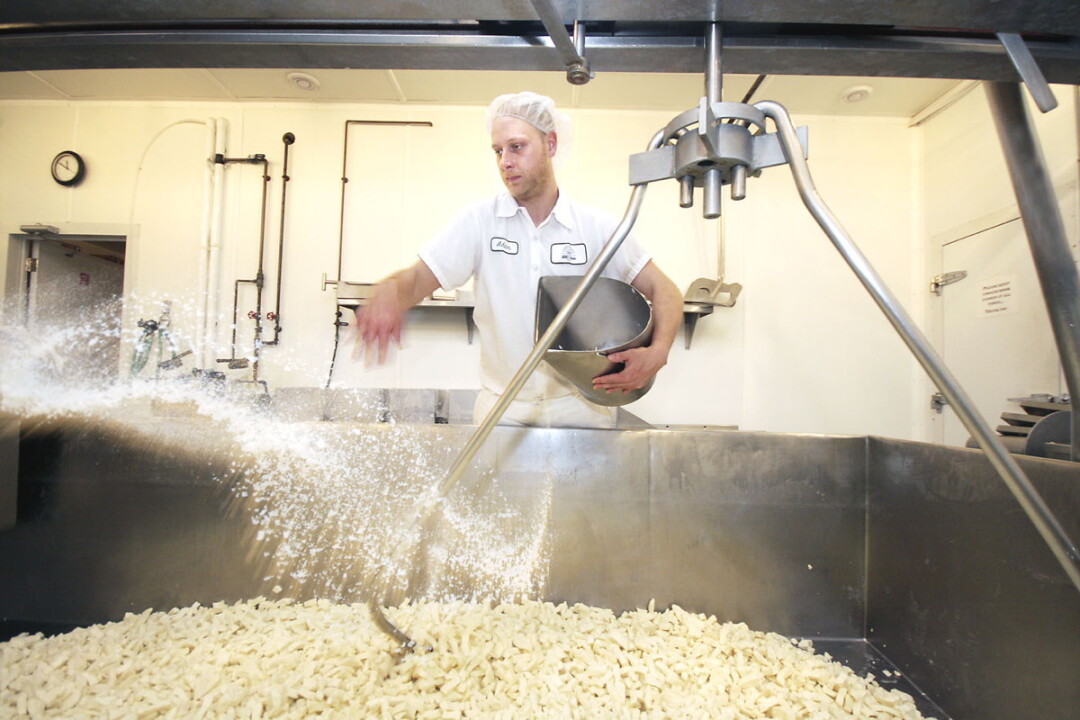What Makes Curds Squeak?
exploring the science behind Wisconsin’s favorite snack
Katie Venit, photos by Andrea Paulseth

There’s nothing like picking up a fresh, warm bag of cheese curds at the farmers market and getting that first squeaky bite. That squeak comes from a special way that long protein molecules in fresh cheese curds rub against your teeth.
To make cheese curds, milk is warmed and a culture with bacteria added. This bacteria eats lactose, a sugar in milk, and turns it into lactic acid. Acids are useful for splitting up proteins.
The protein in milk, called casein, normally floats around in bunches. But as lactic acid builds up, it cuts apart the protein bunches into short pieces. The pieces stick together again, but this time as a net with long, elastic molecules. The net separates milk solids from whey.
You can try this at home: microwave a small cup of milk for 30 seconds. Add a tablespoon of acid such as white vinegar or lemon juice. Stir, and the milk solids clump together into baby curds.
After the milk solids have separated into curds, cheesemakers drain away the whey and add salt. Cheese curds are eaten fresh. They’re bagged and sold to customers right away to maximize squeakiness.
For a day or so, the proteins keeps their long, elastic molecules. After that, lactic acid continues to build up in the cheese, and again cuts the molecules up into shorter pieces. They lose their elasticity and stop squeaking.
To get some of the squeak back, microwave a few unsqueaky curds for three to five seconds. Be careful, they may be hot! The heat brings some of those long strands of protein back together to become elastic again. Take a bite, and squeak squeak squeak away!
This article originally appeared in Chippewa Valley Family (ChippewaValleyFamily.org).

